Filter by

In/visible Sight The Mixed-Descent Families of Southern New Zealan
Angela Wanhalla begins her story in Maitapapa, Taieri, New Zealand, the mixed-descent community where her great-grandparents, John Brown and Mabel Smith, were born. As In/visible Sight takes shape, a community emerges from the records, re-casting history and identity in the present. Drawing on the experiences of mixed-Maori/White families, Wanhalla examines the early history of southern New Zea…
- Edition
- -
- ISBN/ISSN
- 9781897425879
- Collation
- -
- Series Title
- -
- Call Number
- -
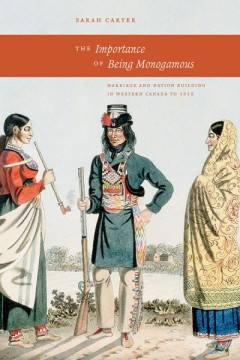
The Importance of Being Monogamous Marriage and Nation Building in Western C…
Sarah Carter reveals the pioneering efforts of the government, legal, and religious authorities to impose the “one man, one woman” model of marriage upon Mormons and Aboriginal people in Western Canada. This lucidly written, richly researched book revises what we know about marriage and the gendered politics of late 19th century reform, shifts our understanding of Aboriginal history during …
- Edition
- -
- ISBN/ISSN
- 9780888644909.01
- Collation
- -
- Series Title
- -
- Call Number
- 399 pages
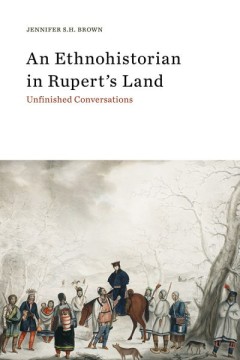
An Ethnohistorian in Rupert’s Land Unfinished Conversations
In 1670, the ancient homeland of the Cree and Ojibwe people of Hudson Bay became known to the English entrepreneurs of the Hudson’s Bay Company as Rupert’s Land, after the founder and absentee landlord, Prince Rupert. For four decades, Jennifer S. H. Brown has examined the complex relationships that developed among the newcomers and the Algonquian communities—who hosted and tolerated the …
- Edition
- -
- ISBN/ISSN
- 9781771991711.01
- Collation
- -
- Series Title
- -
- Call Number
- 6 x 9, 368 pages

Unforgetting Private Charles Smith
Private Charles Smith had been dead for close to a century when Jonathan Hart discovered the soldier’s small diary in the Baldwin Collection at the Toronto Public Library. The diary’s first entry was marked 28 June 1915. After some research, Hart discovered that Charles Smith was an Anglo-Canadian, born in Kent, and that this diary was almost all that remained of this forgotten man, who lik…
- Edition
- -
- ISBN/ISSN
- 9781771992534.01
- Collation
- -
- Series Title
- -
- Call Number
- 4.5 x 6.5, 80 pages

The Teacher and the Superintendent Native Schooling in the Alaskan Interior,…
From its inception in 1885, the Alaska School Service was charged with the assimilation of Alaskan Native children into mainstream American values and ways of life. Working in the missions and schools along the Yukon River were George E. Boulter and Alice Green, his future wife. Boulter, a Londoner originally drawn to the Klondike, had begun teaching in 1905 and by 1910 had been promoted to sup…
- Edition
- -
- ISBN/ISSN
- 9781927356500.01
- Collation
- -
- Series Title
- Our Lives: Diary, Memoir, and Letters
- Call Number
- 440 pages
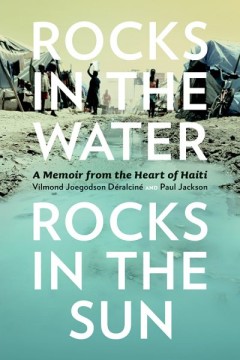
Rocks in the Water, Rocks in the Sun A Memoir from the Heart of Haiti
When Joegodson Déralciné was still a small child, his parents left rural Haiti to resettle in the rapidly growing zones of Port-au-Prince. As his family entered the city in 1986, Duvalier and his dictatorship exited. Haitians, once terrorized under Duvalier’s reign, were liberated and emboldened to believe that they could take control of their lives. But how? Joining hundreds of thousands o…
- Edition
- -
- ISBN/ISSN
- 9781771990110.01
- Collation
- -
- Series Title
- Our Lives: Diary, Memoir, and Letters
- Call Number
- 390 pages
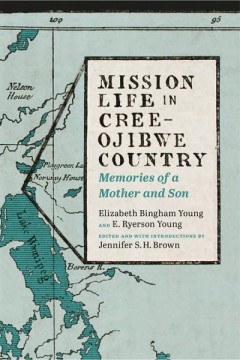
Mission Life in Cree-Ojibwe Country Memories of a Mother and Son
In May of 1868, Elizabeth Bingham Young and her new husband, Egerton Ryerson Young, began a long journey from Hamilton, Ontario, to the Methodist mission of Rossville. For the next eight years, Elizabeth supported her husband’s work at two mission houses, Norway House and then Berens River. Unprepared for the difficult conditions and the “eight months long” winter, and unimpressed with �…
- Edition
- Jennifer S. H. Brown
- ISBN/ISSN
- 9781771990035.01
- Collation
- -
- Series Title
- Our Lives: Diary, Memoir, and Letters
- Call Number
- 336 pages
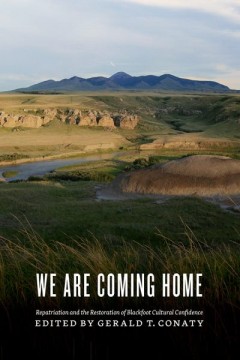
We Are Coming Home Repatriation and the Restoration of Blackfoot Cultural Co…
In 1990, Gerald Conaty was hired as senior curator of ethnology at the Glenbow Museum, with the particular mandate of improving the museum’s relationship with Aboriginal communities. That same year, the Glenbow had taken its first tentative steps toward repatriation by returning sacred objects to First Nations’ peoples. These efforts drew harsh criticism from members of the provincial gover…
- Edition
- -
- ISBN/ISSN
- 9781771990172.01
- Collation
- -
- Series Title
- -
- Call Number
- 304 pages

Imagining Head-Smashed-In Aboriginal Buffalo Hunting on the Northern Plains
At the place known as Head-Smashed-In in southwestern Alberta, Aboriginal people practiced a form of group hunting for nearly 6,000 years before European contact. The large communal bison traps of the Plains were the single greatest food-getting method ever developed in human history. Hunters, working with their knowledge of the land and of buffalo behaviour, drove their quarry over a cliff and…
- Edition
- -
- ISBN/ISSN
- 9781897425046.01
- Collation
- -
- Series Title
- -
- Call Number
- 6.5 x 9.25, 361 pages

One Step Over the Line Toward a History of Women in the North American Wests
Sixteen essays arising from the “Unsettled Pasts: Reconceiving the West through Women’s History” conference at the University of Calgary comprise this foundational text. One Step Over the Line is not only the map; it is the bridgework to span the transnational, gendered divide—a must for readers who have been searching for a wide, inclusive perspective on our western past.
- Edition
- -
- ISBN/ISSN
- 9780888645012.01
- Collation
- -
- Series Title
- -
- Call Number
- 474 pages
 Computer Science, Information & General Works
Computer Science, Information & General Works  Philosophy & Psychology
Philosophy & Psychology  Religion
Religion  Social Sciences
Social Sciences  Language
Language  Pure Science
Pure Science  Applied Sciences
Applied Sciences  Art & Recreation
Art & Recreation  Literature
Literature  History & Geography
History & Geography